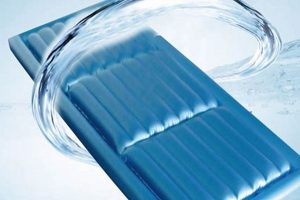A specialized overlay designed to be placed on top of a standard mattress is often used in the prevention and management of pressure ulcers, also known as bedsores. These overlays aim to redistribute pressure, minimizing concentrated force on bony prominences and susceptible areas of the body. This redistribution promotes improved blood circulation to the skin and underlying tissues.
The utilization of such support surfaces plays a critical role in healthcare and homecare settings for individuals with limited mobility or those confined to a bed for extended periods. By reducing pressure, these overlays can significantly decrease the risk of tissue breakdown and the subsequent development of painful and potentially debilitating bedsores. Historically, simple padding was used; modern designs incorporate advanced materials and construction techniques to maximize effectiveness and comfort.
The subsequent sections will delve into the various types of these overlays, their construction materials, factors to consider when selecting one, and best practices for care and maintenance to ensure optimal performance and longevity. Understanding these aspects is essential for making informed decisions regarding pressure ulcer prevention strategies.
Guidance on Selecting and Utilizing a Pressure Redistribution Overlay
The following tips provide practical guidance for selecting, using, and maintaining a support surface intended to mitigate pressure and prevent skin breakdown.
Tip 1: Material Considerations: Evaluate the composition of the overlay. Options include foam, gel, air, and combinations thereof. Foam offers basic pressure reduction, while gel and air provide more dynamic redistribution. The choice should be based on the individual’s risk factors and existing skin condition.
Tip 2: Pressure Redistribution Capabilities: Assess the overlay’s ability to effectively redistribute pressure away from bony prominences such as the sacrum, heels, and hips. A surface that conforms to the body’s contours is generally more effective at minimizing concentrated pressure points.
Tip 3: Cleanability and Hygiene: Select an overlay with a waterproof and easily cleanable surface. This prevents the absorption of fluids and facilitates regular cleaning, crucial for maintaining hygiene and preventing bacterial growth, which can exacerbate skin issues.
Tip 4: Size and Fit: Ensure the overlay properly fits the existing mattress. Overhang or insufficient coverage can compromise its effectiveness and potentially create new pressure points.
Tip 5: Weight Capacity: Verify the overlay’s weight capacity meets the individual’s needs. Exceeding the weight limit can reduce its pressure redistribution capabilities and potentially damage the overlay.
Tip 6: Proper Positioning: Even with a pressure redistribution overlay, regular repositioning remains essential. Implement a turning schedule to further minimize prolonged pressure on any single area.
Tip 7: Regular Inspection: Routinely inspect both the individual’s skin and the overlay for any signs of wear and tear. Early detection of issues allows for timely intervention and prevents further complications.
Adhering to these guidelines enhances the effectiveness of pressure redistribution overlays in preventing pressure ulcers and promoting skin integrity. Combining the use of such a support surface with diligent skin care and regular repositioning yields the best outcomes.
The subsequent section will provide a summary of key findings and reinforce the importance of proactive pressure ulcer prevention strategies.
1. Material Composition
The efficacy of a support surface designed for pressure injury prevention is intrinsically linked to its material composition. The selection of materials directly impacts the product’s ability to redistribute pressure, manage microclimate, and provide long-term durability. For example, a foam overlay constructed from low-density polyurethane will offer limited pressure redistribution compared to a viscoelastic foam that contours more effectively to the body. Similarly, overlays utilizing gel or air offer dynamic pressure redistribution, adjusting to movement and minimizing sustained pressure on bony prominences. The choice of material, therefore, serves as a primary determinant of the overlay’s preventative capacity.
Furthermore, the material composition influences the microclimate surrounding the skin. Excessive moisture contributes to skin maceration, increasing the risk of pressure injury development. Overlays constructed from breathable fabrics or incorporating ventilation channels help to dissipate heat and moisture, creating a more favorable environment. Conversely, impermeable materials trap moisture, exacerbating the risk. For instance, a waterproof polyurethane-coated overlay may be necessary for infection control but requires careful monitoring to prevent moisture buildup. The ideal material balances infection control needs with the provision of a dry and comfortable microclimate.
In conclusion, the material composition is not merely a constructional aspect but a fundamental determinant of a support surface’s suitability for pressure injury prevention. A careful evaluation of material properties, considering pressure redistribution, microclimate management, and durability, is essential for selecting an overlay that effectively mitigates the risk of pressure injury development. Failing to consider this factor compromises the product’s effectiveness and the individual’s well-being.
2. Pressure Redistribution
Pressure redistribution is a core function of support surfaces designed for pressure ulcer prevention, directly influencing their efficacy. The ability to minimize concentrated pressure on bony prominences is paramount to reducing tissue ischemia and subsequent breakdown. These overlays aim to spread the load, facilitating blood flow and maintaining tissue viability. The following facets explore key aspects of this mechanism.
- Material Properties and Load Distribution
The inherent material properties of the overlay dictate its pressure redistribution capabilities. Viscoelastic foam, for example, conforms to the body’s contours, increasing the contact area and reducing peak pressures. Air-filled overlays dynamically adjust to body movements, further minimizing sustained pressure on any single point. The selection of material thus directly affects the effectiveness of load distribution.
- Immersion and Envelopment
Effective pressure redistribution relies on the principles of immersion and envelopment. Immersion refers to the degree to which the body sinks into the support surface, increasing the contact area. Envelopment describes the surface’s ability to conform to the body’s shape, further distributing pressure. Overlays th
at offer both immersion and envelopment are typically more effective in reducing pressure concentrations. - Dynamic vs. Static Redistribution
Pressure redistribution can be either static or dynamic. Static redistribution involves a constant level of support and pressure distribution, suitable for individuals with stable conditions. Dynamic redistribution, on the other hand, involves cyclical pressure changes, stimulating blood flow and reducing the risk of prolonged ischemia. Dynamic overlays are often preferred for individuals at higher risk of pressure ulcer development.
- Impact on Tissue Perfusion
The ultimate goal of pressure redistribution is to improve tissue perfusion. By minimizing concentrated pressure, these overlays facilitate blood flow to the skin and underlying tissues, preventing ischemia and necrosis. Monitoring skin integrity and perfusion levels is essential to assess the effectiveness of the pressure redistribution strategy.
The aforementioned facets underscore the importance of pressure redistribution as a key feature of support surfaces intended for pressure ulcer prevention. The selection of an appropriate overlay requires careful consideration of material properties, immersion/envelopment characteristics, redistribution dynamics, and their collective impact on tissue perfusion. Effective pressure redistribution strategies play a critical role in maintaining skin integrity and improving patient outcomes.
3. Microclimate Control
Microclimate control, referring to the management of temperature and moisture at the skin-support surface interface, represents a critical consideration in the design and selection of support surfaces intended to mitigate the risk of pressure injuries. The microclimate directly influences skin integrity; excessive moisture and elevated temperatures can compromise the skin’s barrier function and increase its susceptibility to damage. Effective control of these factors is therefore an integral component of a comprehensive pressure ulcer prevention strategy.
- Moisture Management
Excessive moisture, stemming from perspiration, incontinence, or wound exudate, macerates the skin, weakening its structure and increasing its vulnerability to friction and shear forces. Support surfaces designed with moisture-wicking materials or ventilation channels facilitate the evaporation of moisture, maintaining a drier microenvironment. For instance, overlays incorporating breathable fabrics or multi-layered constructions actively draw moisture away from the skin, reducing the risk of maceration and subsequent tissue breakdown.
- Temperature Regulation
Elevated skin temperature increases metabolic demand and can contribute to inflammation, potentially exacerbating pressure injury development. Materials with high thermal conductivity facilitate heat dissipation, helping to maintain a stable and comfortable skin temperature. Overlays constructed from materials that promote airflow further aid in temperature regulation, preventing localized heat buildup and reducing the risk of inflammation and tissue damage.
- Material Selection and Breathability
The choice of materials significantly influences microclimate control. Breathable fabrics, such as those with open-cell structures or moisture-wicking properties, promote airflow and facilitate moisture evaporation. Conversely, impermeable materials trap moisture and heat, creating an environment conducive to skin maceration and breakdown. The selection of materials that balance breathability with infection control properties is crucial for maintaining optimal microclimate conditions.
- Impact on Skin Integrity
Effective microclimate control directly impacts skin integrity by reducing the risk of maceration, inflammation, and infection. Maintaining a dry and cool microenvironment strengthens the skin’s barrier function, increasing its resistance to pressure, friction, and shear forces. Overlays that effectively manage microclimate conditions contribute to improved patient comfort and a reduced risk of pressure injury development.
The features of support surfaces designed for bedsore prevention, is not simply an adjunct consideration but a fundamental aspect of their effectiveness. Proper material selection, breathability considerations, and attention to temperature and moisture management are essential for optimizing the microclimate and promoting skin integrity. Overlays that prioritize microclimate control contribute significantly to a holistic approach to pressure ulcer prevention, enhancing patient comfort and improving clinical outcomes.
4. Infection Control
Infection control is a paramount consideration in the context of support surfaces designed for pressure ulcer prevention. The integrity of the skin, already compromised in individuals at risk for pressure injuries, necessitates stringent measures to prevent bacterial contamination and subsequent infection. Overlays serve as a potential reservoir for pathogens, underscoring the importance of materials and designs that facilitate effective disinfection and minimize microbial growth.
- Waterproof and Cleanable Surfaces
The selection of materials that are both waterproof and readily cleanable is fundamental to infection control. Impermeable surfaces prevent the absorption of bodily fluids, such as urine, blood, or wound exudate, which can harbor bacteria and create a breeding ground for infection. Easy cleanability allows for routine disinfection, removing contaminants and minimizing the risk of cross-contamination. Materials like polyurethane-coated fabrics are commonly used due to their impermeability and ease of cleaning with standard disinfectants. Failure to maintain a clean surface can lead to bacterial proliferation and subsequent infection of existing pressure injuries or the development of new ones.
- Antimicrobial Properties
Some support surfaces incorporate antimicrobial agents directly into the material or coating. These agents inhibit the growth of bacteria, fungi, and other microorganisms, providing an additional layer of protection against infection. For instance, silver-impregnated fabrics have demonstrated antimicrobial properties, reducing the bacterial load on the surface of the overlay. However, the long-term efficacy and potential for the development of antimicrobial resistance warrant careful consideration when selecting overlays with these features.
- Seam Construction and Design
The design and construction of seams can significantly impact infection control. Seams can trap fluids and debris, providing a haven for bacteria. Overlays with welded or sealed seams minimize these potential reservoirs. Similarly, designs that reduce the number of seams or incorporate overlapping flaps can further enhance infection control. Careful attention to seam construction is particularly important in areas prone to fluid exposure, such as the perineal region.
- Disinfection Protocols and Compatibility
Adherence to established disinfection protocols is essential for maintaining a hygienic support surface. The compatibility of cleaning agents with the overlay material must be verified to prevent damage or degradation. Harsh chemicals can compromise the integrity of t
he material, reducing its effectiveness and potentially creating crevices that harbor bacteria. Hospitals and care facilities should establish and implement standardized disinfection procedures, ensuring that all support surfaces are routinely cleaned and disinfected according to manufacturer recommendations.
In conclusion, infection control is an integral component of the use of any support surface designed for pressure ulcer prevention. The selection of materials, design features, and disinfection protocols must prioritize the minimization of bacterial contamination and the prevention of infection. Failure to address these considerations can negate the benefits of pressure redistribution and microclimate control, ultimately compromising patient safety and increasing the risk of adverse outcomes. Maintaining a clean and hygienic support surface is paramount to protecting vulnerable individuals from the devastating consequences of infection.
5. Proper Size
The dimensional conformity of a pressure redistribution overlay, commonly referred to as a “bedsore mattress topper,” is a critical factor influencing its effectiveness in preventing pressure injuries. A mismatch between the overlay’s dimensions and the underlying mattress can compromise its intended function, potentially creating new pressure points and negating its therapeutic benefits.
- Complete Coverage and Pressure Redistribution
A properly sized overlay ensures complete coverage of the underlying mattress surface, extending from edge to edge. Inadequate coverage leaves areas of the mattress exposed, failing to provide pressure redistribution in these regions. For example, if an overlay is too narrow, the individual’s hips or shoulders may rest directly on the standard mattress, negating the intended pressure relief in these high-risk areas. This incomplete pressure redistribution can increase the likelihood of tissue breakdown and pressure ulcer formation.
- Prevention of Edge Effects
Edge effects occur when the overlay is too small, creating a firm edge that can act as a pressure point. Individuals lying near the edge of the bed may experience concentrated pressure along this boundary, increasing the risk of skin injury. A correctly sized overlay extends fully to the edges of the mattress, creating a smooth transition and preventing these pressure concentrations. The dimensions must precisely match to avoid these adverse effects.
- Impact on Immersion and Envelopment
Proper sizing influences the effectiveness of immersion and envelopment, key principles of pressure redistribution. An undersized overlay may not allow for adequate immersion, reducing the contact area between the body and the support surface. Conversely, an oversized overlay may bunch up or fold, creating uneven pressure distribution. Optimal immersion and envelopment require a precise fit, ensuring uniform pressure redistribution across the entire contact area.
- Facilitation of Proper Positioning
A correctly sized overlay facilitates proper patient positioning and repositioning. Inadequate dimensions can hinder the ability to achieve and maintain recommended positioning strategies, such as the 30-degree lateral tilt. Conversely, an overly large overlay can make it difficult to control the patient’s position, potentially leading to instability and increased risk of falls. The appropriate size promotes effective positioning and enhances the overall care plan.
In summary, the dimensional accuracy of an overlay intended for pressure injury prevention is paramount. A precise fit ensures complete coverage, prevents edge effects, optimizes immersion and envelopment, and facilitates proper positioning. Healthcare providers must carefully assess the dimensions of the underlying mattress and select an overlay that conforms precisely to these measurements to maximize its therapeutic benefits and minimize the risk of pressure-related complications.
Frequently Asked Questions
The following questions and answers address common concerns and misconceptions surrounding the use of support surfaces designed for the prevention of pressure ulcers, commonly referred to as “bedsore mattress toppers.”
Question 1: What is the expected lifespan of a bedsore mattress topper?
The lifespan varies depending on the material, usage, and care provided. High-quality foam or gel toppers may last several years with proper maintenance. Air mattress toppers might require more frequent repairs or replacements. Regular inspection for wear and tear is essential.
Question 2: Can a bedsore mattress topper completely eliminate the risk of pressure ulcers?
No, a bedsore mattress topper is only one component of a comprehensive pressure ulcer prevention strategy. Regular repositioning, proper skin care, adequate nutrition, and monitoring for early signs of skin breakdown remain crucial.
Question 3: How should a bedsore mattress topper be cleaned and disinfected?
Cleaning and disinfection protocols depend on the material. Most toppers can be wiped down with a mild detergent and water solution. Strong chemicals or abrasive cleaners should be avoided. Air mattress toppers may require specific cleaning procedures for the air pump and mattress surface.
Question 4: Are all bedsore mattress toppers equally effective?
No, the effectiveness varies depending on the material, design, and individual patient factors. Factors to consider include pressure redistribution capabilities, microclimate control, weight capacity, and ease of cleaning. Consultation with a healthcare professional is recommended to determine the most appropriate option.
Question 5: What is the appropriate weight capacity for a bedsore mattress topper?
Weight capacity varies depending on the specific model. Exceeding the weight limit can compromise the topper’s pressure redistribution capabilities and reduce its lifespan. Always verify that the weight capacity meets the individual’s needs before use.
Question 6: Can a bedsore mattress topper be used on any type of bed?
Bedsore mattress toppers are generally designed for use on standard hospital beds, adjustable beds, or home mattresses. The topper should be placed directly on top of the mattress and secured if necessary. Compatibility with specific bed frames should be verified before use.
In summary, bedsore mattress toppers are valuable tools for pressure ulcer prevention, but they must be used in conjunction with other preventive measures and carefully selected based on individual needs and risk factors.
The subsequent section will delve into the financial considerations surrounding the purchase and maintenance of support surfaces.
Conclusion
The preceding exposition has explored the multifaceted aspects of the bedsore mattress topper, emphasizing its role in pressure ulcer prevention. Key points encompassed material composition, pressure redistribution mechanics, microclimate management, infection control, and the criticality of proper sizing. The presented information underscores the importance of selecting an appropriate support surface tailored to individual patient needs and risk factors.
Prudent implementation of pressure ulcer prevention strategies, including the informed utilization of bedsore mattress toppers, remains paramount. Continuous vigilance in skin assessment, coupled with diligent adherence to established protocols, represents the most
effective approach to minimizing the incidence of these debilitating conditions. Further research and technological advancements hold the promise of enhanced support surfaces, ultimately contributing to improved patient outcomes and a reduction in healthcare burden.


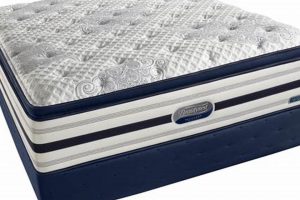
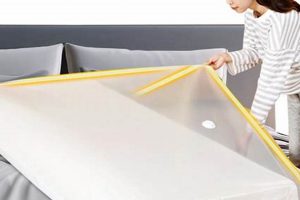
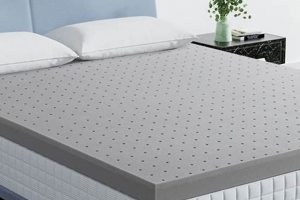
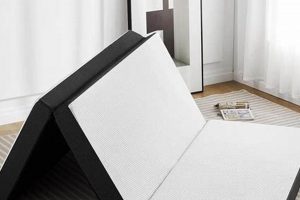
![Top Dosaze Mattress Topper: Comfort & Value [Year] Organic & Natural Mattress Buyer’s Guide: Non-Toxic Sleep Solutions Top Dosaze Mattress Topper: Comfort & Value [Year] | Organic & Natural Mattress Buyer’s Guide: Non-Toxic Sleep Solutions](https://mattressworldpa.com/wp-content/uploads/2025/07/th-5904-300x200.jpg)
